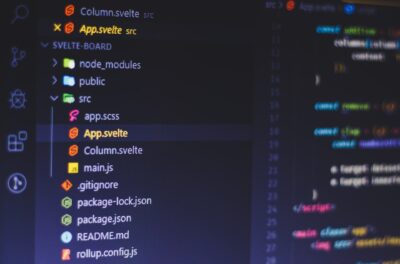Now, you might be thinking, “API-what now?” or “Why does this matter to me?” That’s perfectly okay; we’re here to answer those questions. This comprehensive guide aims to break down what API-First Design is, why it’s something to keep your eye on, and how it could be the best decision you make for your next web development project. And just so you know, at heyreliable.com, we hand-code everything from scratch. No shortcuts, no convertor tools, no plugins—just quality code, every single time.
What is API-First Design?
Alright, let’s get down to it. API-First Design is a development methodology that puts the API at the center of the product development cycle. This approach is sort of like building a house by first creating a robust foundation before you put up the walls and install the roof. By designing the API first, you’re setting the groundwork for the entire application to be more functional, reliable, and easy to work with.
This isn’t just another techy buzzword; it’s a methodology that turns the traditional development process on its head. Usually, APIs are developed as an afterthought, something you tack on after building the primary application. But with API-First Design, you start with the API, ensuring that all the digital building blocks fit together smoothly from the get-go.
Why does this matter to you? Well, it makes your life a whole lot easier if you’re a freelancer, an agency, or even an in-house developer. With a well-designed API, you can be more agile, make quicker updates, and ensure that your application scales seamlessly.
And here’s where we add our little twist. At heyreliable.com, we specialize in API-First Design, and we hand-code everything from scratch. This means we’re committed to providing the highest quality, no compromise, no shortcuts. We believe that doing things the right way from the start sets you up for long-term success.
What Are the Benefits of API-First Design?
You’ve got a sense of what API-First Design is, so let’s talk about why it’s something you should seriously consider. The benefits aren’t just technical mumbo-jumbo; they have real-world implications that could make your life as a developer, freelancer, or agency much simpler and more productive.
Future-Ready
First up, API-First Design makes your application future-ready. Technologies change, new platforms emerge, but a well-designed API can weather these changes. Think of it as future-proofing your project.
Consistency
When you build with API-First, you also establish a consistent foundation for your project. This uniformity makes it easier to integrate other services or platforms later on, saving you time and potential headaches.
Time-Saving
We all know that time is money. API-First Design streamlines the development process, enabling you to launch faster. No need to go back and make adjustments to fit the API in. It’s there from the start, working smoothly and doing its job.
Collaboration Boost
Here’s another perk: an API-First approach facilitates better collaboration between frontend and backend developers. Because the API is designed upfront, both parties have a clear blueprint to work from. This reduces misunderstandings and speeds up the development process.
Agility and Flexibility
Lastly, an API-First approach gives you the agility to adapt and grow. Need to add a mobile app down the line? Easy. How about integrating with third-party services? A cinch with a well-designed API.
At heyreliable.com, we’ve seen first-hand how adopting an API-First Design methodology can bring these benefits to life. We take pride in being a developer partner for agencies and freelancers, offering hand-coded, tailor-made solutions that meet your specific needs.
Of course! Let’s dive into distinguishing API Code First from API Design First, which is a common source of confusion.
Difference Between API Code First and Design First
Ah, the age-old debate: API Code First or Design First? If you’ve been in the field for a while, you’ve likely heard both terms thrown around. At first glance, they may seem like two sides of the same coin, but they have some crucial differences.
API Code First is about coding your way into the API. You start by writing code, and then the API is generated based on that code. In this method, the code dictates the API’s capabilities. Think of it like building a car by first designing the engine, and then creating the body around it.
On the other hand, API Design First focuses on outlining the API specifications before a single line of code is written. This approach is similar to drafting blueprints for a building before you start laying bricks.
Both approaches have their merits. API Code First is generally faster initially and allows you to get something functional up and running quickly. However, this speed can be deceiving. It might make changes more cumbersome later on, especially if you need to integrate new platforms or features.
API Design First requires more upfront planning but pays dividends down the road. With a well-thought-out design, future changes become more straightforward, and integration with other platforms or services is more streamlined.
Here at heyreliable.com, we’re all about API-First Design. We believe in setting up a strong foundation that can accommodate growth and changes effortlessly. We’re committed to hand-coding your API from scratch to ensure that it’s robust, reliable, and exactly what you need. Our goal is to be the developer partner you can rely on, helping agencies and freelancers build applications that not only meet but thrive in today’s ever-changing tech environment.
Getting Started with API Design
So, you’re pumped about API-First Design and can’t wait to get started. Awesome! But where do you even begin? If you’re new to this or looking to transition from a different approach, taking the first steps can feel a bit daunting. But don’t worry; we’re here to guide you through it.
First thing’s first—sit down and plan. This may sound like a no-brainer, but you’d be surprised how many people skip this crucial step. Take time to figure out what you want your API to do. Who will use it? What functionalities should it have? How should it interact with other systems? These are just a few of the questions that need answering.
Once you’ve got a rough idea, get some feedback. Talk to the people who will be using the API, whether they’re developers, stakeholders, or end-users. Their insights can provide valuable perspectives that you might not have considered.
Before you dive into coding, it helps to visualize the API’s design. Use whatever method you’re comfortable with—sketches, flowcharts, or design software—to map out how the API will work. And yes, documentation is your friend. Keep track of your design decisions; they’ll come in handy later.
Designing an API is rarely a one-and-done situation. You’ll likely go through several iterations before landing on the final version. Each iteration is a chance to refine and improve, making your API more efficient and effective.
At heyreliable.com, we take all these steps seriously. As your developer partner, we make sure to hand-code your API from scratch, taking into account all your specific needs and requirements. Our commitment is to quality, and we believe that a well-planned API is the cornerstone of a successful project.
Absolutely, let’s continue. Up next, we’ll provide an example of API-First Design to illustrate how it all comes together in a real-world scenario.
A Real-World Example of API-First Design
Imagine you’re a freelancer hired by a marketing agency to develop a content management system (CMS). The agency wants this CMS to be versatile. It should support multiple types of content, be accessible through various platforms (web, mobile, etc.), and easily integrate with other tools like analytics software and email marketing services.
Starting with an API-First Design approach, you lay down the groundwork. You decide what endpoints the API will have, what data it will send and receive, and how it will interact with the frontend and third-party services. With a clearly defined API, the frontend developers can work on the user interface simultaneously while you focus on the backend. There’s no waiting around; everyone knows what to expect from the API and can proceed without hitches.
A few months later, the agency wants to add a mobile app to their offerings. Thanks to the well-designed API, this addition doesn’t require a complete overhaul of the existing system. The mobile app developers can readily integrate their work with the API, making the expansion smooth and painless.
If you find yourself in a similar situation, heyreliable.com is equipped to help you succeed. Our specialization in API-First Design and commitment to hand-coding everything from scratch make us a reliable developer partner for agencies and freelancers alike. We focus on delivering a tailored solution that aligns with your goals and facilitates future growth.
Tools and Frameworks for API-First Design
Building an API isn’t a one-person show. Thankfully, there are tools and frameworks out there that can make the process more organized and efficient. While it’s true that we at heyreliable.com hand-code everything from scratch, these tools can be valuable for documenting, testing, and iterating on your API design.
Documentation Tools
While not a thrilling topic, documentation is crucial. Tools like Swagger or Postman can help you create a clean, understandable documentation for your API. This is important not just for you, but for anyone else who’ll be working with the API.
Testing Suites
You’ll want to rigorously test your API to make sure it’s behaving as expected. Programs like JUnit for Java or PyTest for Python can help you test endpoints and functionalities before going live.
Frameworks
There are numerous frameworks specifically designed for API development. Some popular ones include Django REST Framework for Python, Spring Boot for Java, and Express.js for Node.js. While we at heyreliable.com don’t rely on third-party plugins or frameworks, it’s worth noting that these frameworks can offer a strong starting point.
Version Control
Using a version control system like Git can help keep track of changes, collaborate efficiently with other developers, and roll back to previous versions if needed.
At heyreliable.com, our approach is to use the right tools for the job, while still maintaining our commitment to hand-coding and customization. We’re in the business of providing the highest-quality APIs for agencies and freelancers who want their projects built right, from the ground up.
How to Begin: API-First Design Tutorial
Alright, so you’re convinced that API-First Design is the way to go. But reading about it and actually doing it are two different things. Let’s walk through a simplified tutorial on how to kick off your API-First Design project.
Before you do anything else, get a clear understanding of what you want your API to accomplish. Jot down the functionalities it should have, the problems it should solve, and the value it should bring to users or developers.
Start by defining the endpoints your API will have. These are the touchpoints where your API will interact with other software. What data will flow through these endpoints? What methods (GET, POST, PUT, DELETE) will they use? Before diving into coding, mock up some sample responses for each endpoint. This exercise will help you, and any other developers working on the project, to visualize what the final output should look like.
Instead of building the entire API in one go, consider developing it in sprints. Choose a set of functionalities to implement, test them thoroughly, and then move on to the next set. After each sprint, test the implemented functionalities rigorously. Invite feedback from potential users or developers who will interact with the API. Use this feedback for iterative improvements.
Once you’re satisfied with the API’s functionalities and performance, put the finishing touches on it. Fine-tune the documentation, add examples, and ensure it’s ready for public or internal use.
At heyreliable.com, this isn’t just theory. We live and breathe this approach. We’re dedicated to crafting customized APIs for our agency and freelancer partners, taking every detail into account while hand-coding from scratch. With us, you’re not just getting an API; you’re getting a thoughtfully designed, meticulously crafted asset that will serve your project well for the long term.
Absolutely! Having talked about tutorials and step-by-step guidance, it’s essential to understand the foundational principles that underlie API-First Design. These principles serve as the backbone for creating robust and reliable APIs.
Foundational Principles of API-First Design
You’ve likely come across various design paradigms and methodologies in software development. However, API-First Design has its own set of guiding principles that help ensure the resulting API is not just functional but also easy to use, maintain, and scale.
When designing your API, it’s crucial to put yourself in the shoes of the people who will use it. What do they want to accomplish? What would make their lives easier? Thinking from the user’s perspective will help you create a more intuitive API.
Inconsistencies in your API—whether in naming conventions, data structures, or endpoints—can make it difficult to use and maintain. Aim for a uniform design language throughout your API for the sake of clarity.
An API is often a gateway to sensitive data and functionalities. Therefore, building with security in mind from the get-go is non-negotiable. Think about authentication, authorization, and data encryption as you design your API.
An API isn’t a static entity. As your project grows or technology evolves, your API will need to adapt. Design your API in a way that allows for easy updates and extensions without breaking existing functionalities.
While it might be tempting to add all sorts of features and functionalities, a convoluted API can be a nightmare to use and maintain. Stick to the essentials and keep the design as straightforward as possible.
By adhering to these principles, we at heyreliable.com aim to provide an API that stands the test of time. Our commitment to hand-coding every line and our role as a trusted developer partner for agencies and freelancers mean that we don’t just build APIs—we craft long-term solutions tailored to your needs.

Why Choose API-First Design? The Benefits Explained
You might still be wondering, “With all these different approaches to API design, why should I go all-in with API-First?” It’s a valid question, and the answer lies in the multitude of advantages that this methodology offers.
With a well-defined API from the start, development can happen in parallel. Frontend and backend developers can work simultaneously because they both know what to expect from the API. This can speed up your project timeline significantly.
Designed correctly, an API-First approach results in a flexible and scalable API. Whether you want to add new features or integrate with other systems down the line, a robust API can handle it without requiring a complete redo.
API-First Design encourages early and frequent communication among team members. This collaborative environment can lead to a more cohesive final product and fewer headaches during the development process.
With a focus on the consumer’s needs, API-First Design often results in a more user-friendly product. Whether the users are developers integrating with your API or end-users interacting with an app, a thoughtful API makes for a smoother experience.
While it may seem like a significant upfront investment, a well-designed API can save you time and money in the long run. You’ll spend less on troubleshooting, revisions, and updates, allowing you to allocate resources to other important areas.
When you choose to work with heyreliable.com, you’re not just getting an API; you’re gaining a partner dedicated to implementing all these benefits into your project. We hand-code everything, ensuring that your API is not only unique but also finely tuned to meet your specific requirements.
Conclusion: API-First Design—Your Blueprint for Success
We’ve covered a lot of ground, from defining what API-First Design is, to exploring its benefits, diving into real-world examples, discussing essential tools, providing a basic tutorial, and laying out the guiding principles. By now, you should have a well-rounded understanding of what API-First Design can bring to your projects.
Why does all this matter? Because in today’s fast-paced tech environment, starting with a strong foundation isn’t just advisable; it’s essential. An API isn’t merely a component of your project; it’s the backbone that supports every interaction and functionality. And that’s where API-First Design shines—it’s a thoughtful approach that not only streamlines the development process but also yields a robust, scalable, and user-friendly product.
When you work with heyreliable.com, you’re choosing a developer partner committed to these values. We don’t take shortcuts or rely on third-party plugins. We hand-code each line, investing the time and effort required to tailor an API that fits your unique needs like a glove. Whether you’re an agency looking to scale or a freelancer seeking a reliable tech partner, we’re here to make your API project a resounding success.
So if you’re convinced that API-First Design is the way forward—and we hope you are—let’s talk. Let’s take that crucial step to ensure your next project not only meets but thrives in the challenges of today’s digital world.
YOU MAY ALSO ENJOY





